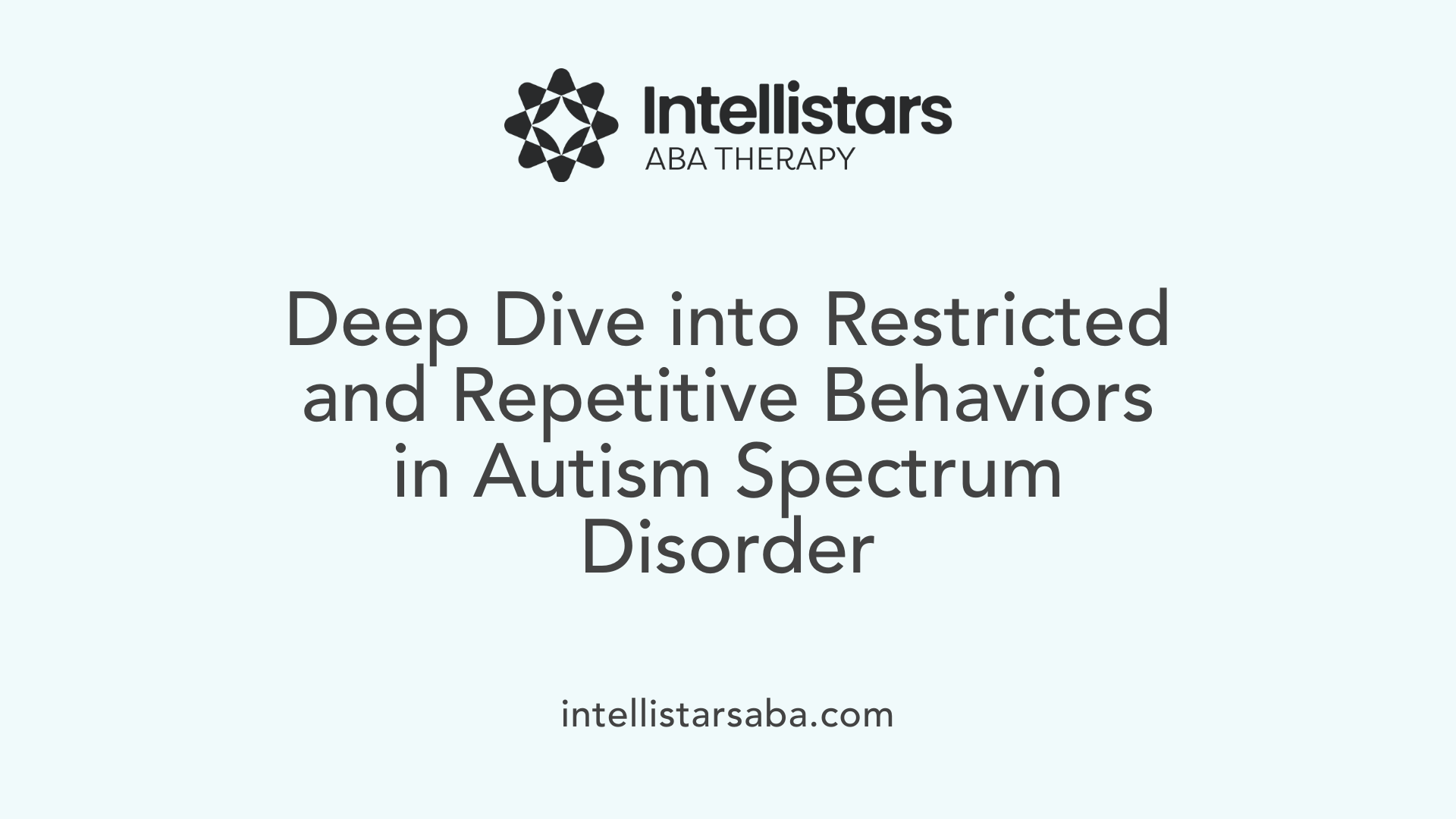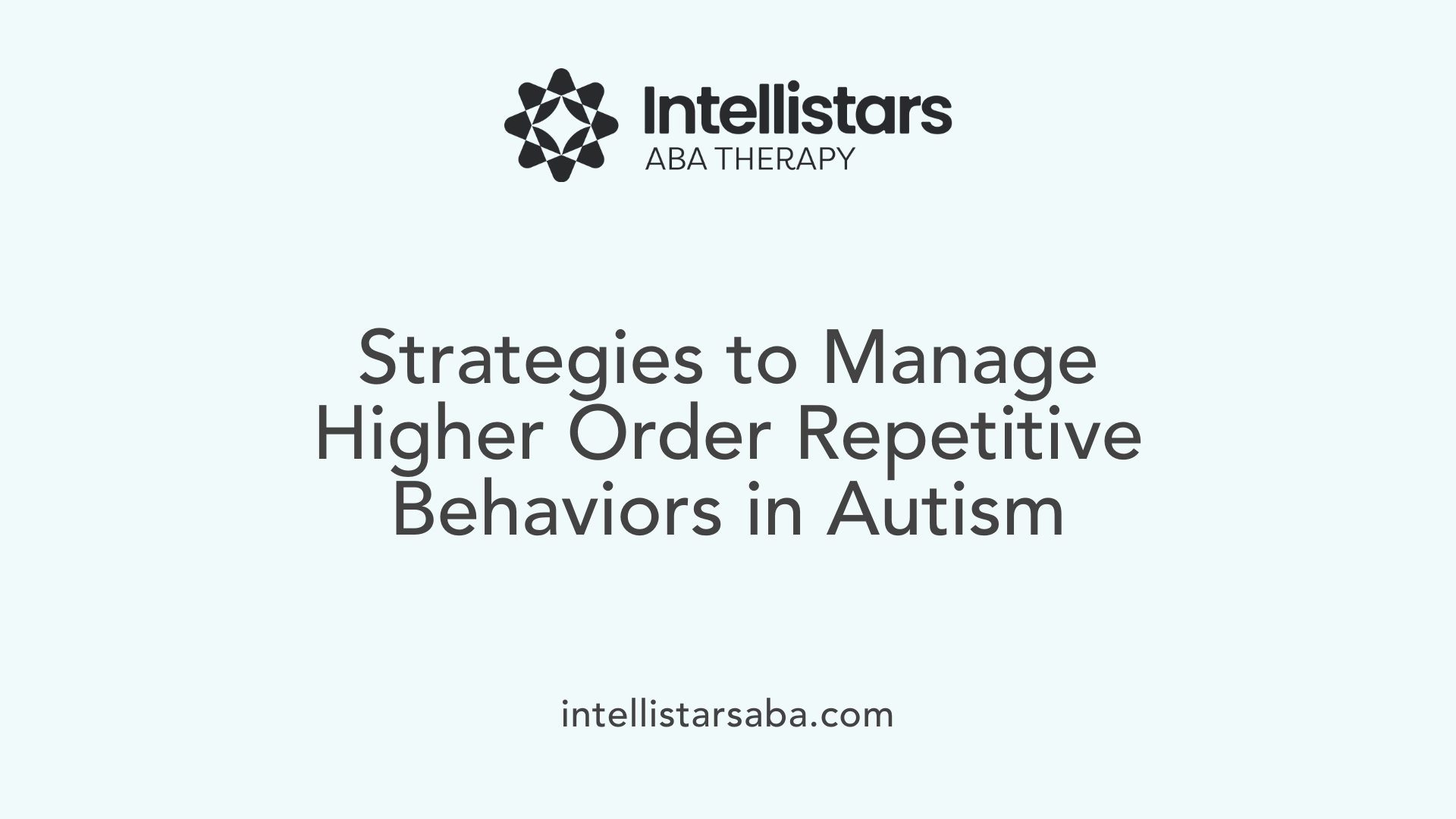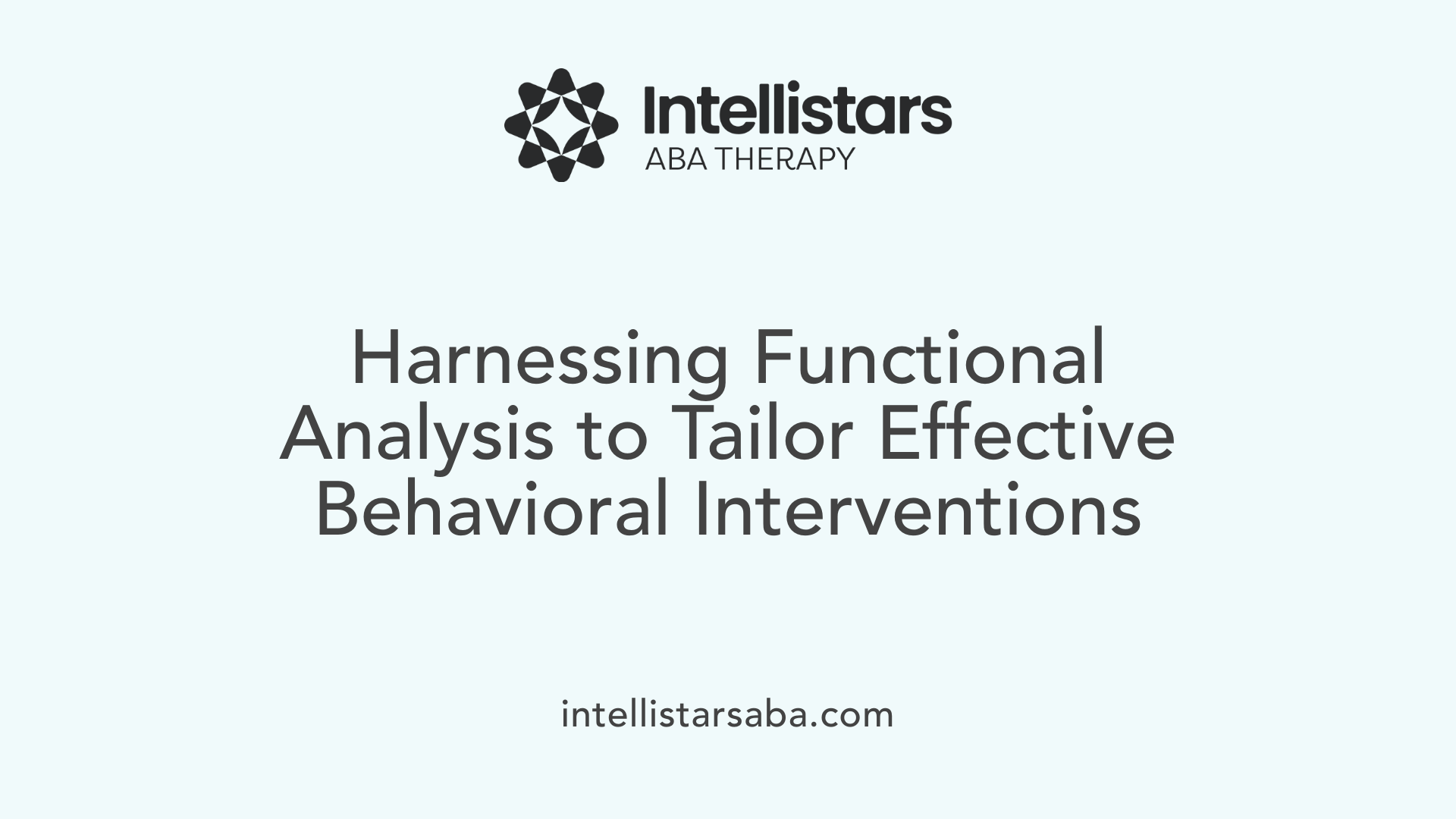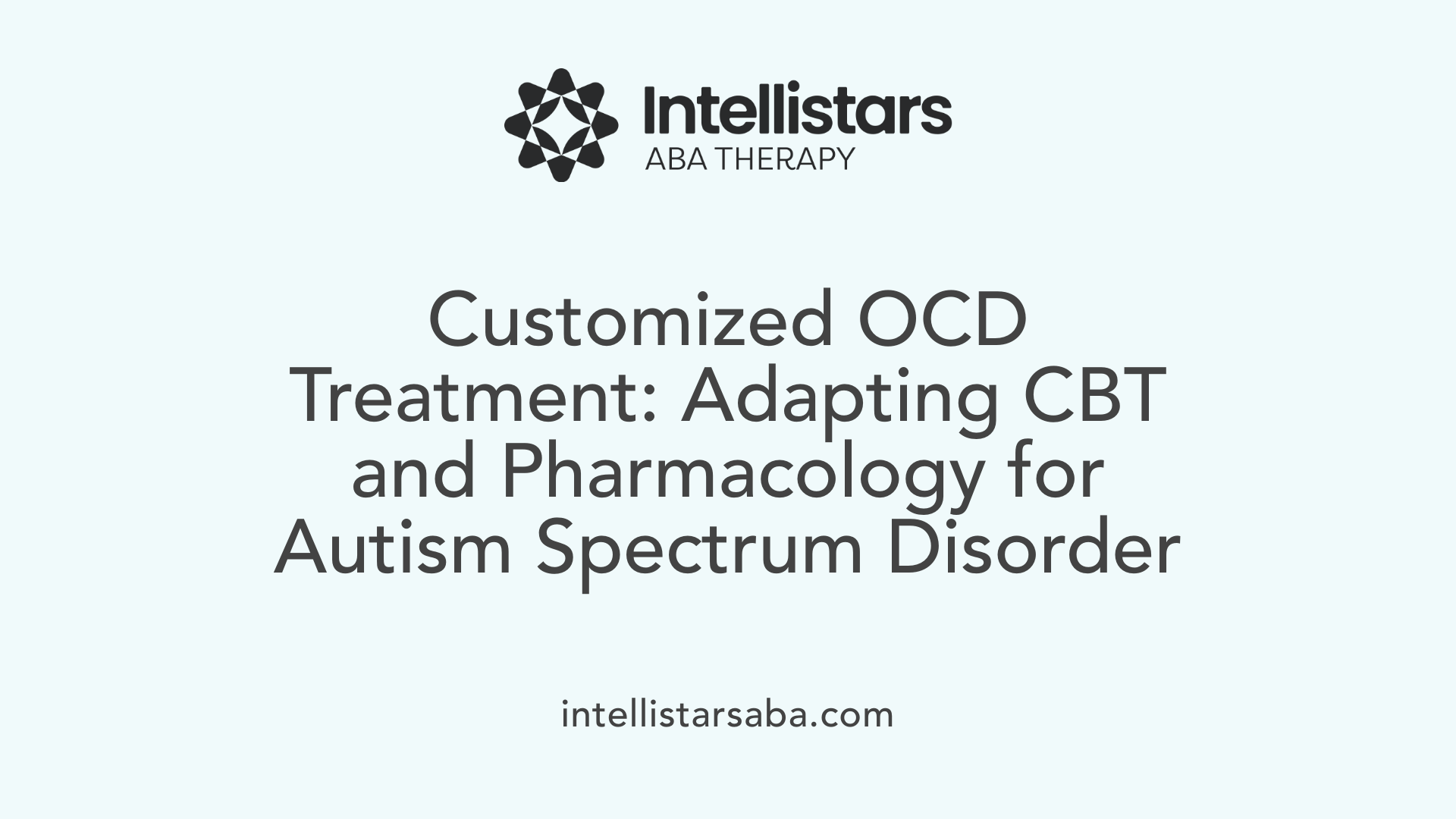Exploring the Core of Autism Obsessions
Restricted and repetitive behaviors (RRBs) stand as a central feature of autism spectrum disorders (ASD), manifesting in diverse ways from simple motor stereotypies to complex insistence on sameness and circumscribed interests. These behaviors can profoundly affect the developmental trajectory and daily lives of individuals with autism, prompting an ongoing quest for effective intervention strategies. This article delves into the nature of these obsessions, the therapies employed to address them, and the nuanced challenges presented by comorbid conditions such as obsessive-compulsive disorder (OCD). Through a detailed exploration of evidence-based practices like Applied Behavior Analysis (ABA) and cognitive-behavioral therapy (CBT), we uncover how targeted behavioral interventions are evolving to support autistic individuals and their families.
What is Applied Behavior Analysis (ABA) Therapy?
Definition and principles of ABA
Applied Behavior Analysis (ABA) therapy is a scientific approach that focuses on understanding and modifying behaviors through carefully crafted environmental strategies. It aims to increase positive behaviors such as communication and social skills, while reducing harmful or disruptive actions by applying principles like positive reinforcement.
Techniques used in ABA
ABA employs a variety of techniques tailored to individual needs. Common methods include Discrete Trial Training (DTT), which teaches skills in a structured way; Pivotal Response Treatment (PRT), which targets motivation; and naturalistic teaching strategies that promote learning in everyday environments. These approaches help address repetitive behaviors common in autism spectrum disorders (ASD).
Customization and professional oversight
Each ABA program is uniquely designed based on thorough behavioral assessments conducted by trained specialists, such as Board Certified Behavior Analysts (BCBAs). This ensures that interventions focus on individual strengths and challenges, adjusting methods as progress is observed.
Evidence supporting ABA effectiveness
Extensive research supports ABA as an effective intervention for individuals with ASD. It has been shown to reduce lower order repetitive behaviors like stereotypies and self-injury, and improve social skills and communication. Early and intensive ABA therapy often leads to the most significant developmental gains.
Who Provides ABA Therapy?
Types of professionals delivering ABA
ABA therapy is typically provided by a range of qualified professionals who specialize in behavior analysis and autism interventions. These include Board Certified Behavior Analysts (BCBAs), behavior therapists, clinical psychologists, and sometimes neurologists or psychiatrists who focus on autism spectrum disorders (ASD). Some providers operate as part of specialized companies or centers dedicated to delivering ABA services.
Settings for service delivery
Services are delivered in diverse environments tailored to the individual's needs. Common settings include in-home therapy, where interventions occur in a familiar family environment; center-based programs offering structured clinical sessions; and community-based settings that encourage generalization of skills in natural contexts.
Role of certified specialists and providers
Certified specialists such as BCBAs design and oversee treatment plans based on thorough behavioral assessments. They train and supervise therapy teams to implement evidence-based ABA techniques, including discrete trial training, naturalistic teaching, and Pivotal Response Training. These experts ensure that interventions are individualized, measurable, and responsive to progress.
Resources for families seeking ABA
Families looking for ABA therapy are encouraged to research local providers carefully. Consulting healthcare professionals for recommendations and exploring provider directories can help identify qualified specialists. Additionally, certain centers and practitioners participate in Medicaid or managed care plans, improving accessibility. Engaging with community autism support organizations can also provide valuable guidance and referrals.
Overall, ABA therapy is delivered by a multidisciplinary team in various settings, led by certified behavior analysts and supported by trained therapists, all working collaboratively to meet the unique needs of individuals with ASD.
Targeted Behaviors in ABA Therapy for Autism
What kind of behaviors does ABA therapy target?
ABA (Applied Behavior Analysis) therapy focuses on specific, observable behaviors that can be clearly defined and measured. This precision allows therapists to track progress effectively and design tailored interventions. Behaviors targeted in ABA range from simple motor actions to complex social interactions. Examples include hitting, pinching, scratching, leaving group activities, shouting, taking food from others, and finger rubbing. Each behavior is defined operationally to ensure consistency across settings and therapists.
ABA aims both to increase helpful behaviors and reduce harmful or disruptive ones. Helpful behaviors commonly targeted for enhancement include communication skills, social interactions, and daily living skills. Conversely, behaviors such as aggression, self-injurious actions, tantrums, and stereotypies (repetitive movements) are targeted for reduction due to their disruptive impact.
Data collection and behavior analysis
A vital part of ABA therapy is gathering accurate data. Methods such as frequency counts (how often a behavior occurs), duration recordings (how long a behavior lasts), and ABC charts (Antecedent-Behavior-Consequence recordings) help identify patterns and triggers. These data guide functional behavior assessments to determine why a behavior occurs, allowing more precise and effective intervention planning.
Goals for increasing helpful and reducing harmful behaviors
The overarching goal of ABA is to teach functional, adaptive skills that enhance independence and quality of life. This involves increasing positive behaviors like requesting help, engaging in social play, or completing self-care tasks. At the same time, the therapy aims to decrease behaviors that cause injury, interrupt learning, or hinder social acceptance.
Overall, ABA therapy targets clearly defined behaviors, uses systematic data collection and analysis, and works towards improving a person’s skills and well-being through individualized, evidence-based interventions.
Effectiveness of ABA Therapy for Individuals with Autism
How effective is ABA therapy for individuals with autism?
Applied Behavior Analysis (ABA) therapy is widely recognized as an evidence-based and effective intervention for individuals with autism spectrum disorders (ASD). Research shows that when ABA is initiated early and delivered consistently, it leads to substantial improvements in key areas such as communication, social skills, adaptive behaviors, and emotional regulation.
Evidence of ABA efficacy
Numerous controlled studies involving children, typically between the ages of 4 and 11, have demonstrated ABA's ability to reduce repetitive and problem behaviors while enhancing positive developmental outcomes. ABA's structured approach relies on analyzing behaviors and their functions, then applying targeted interventions like functional communication training and differential reinforcement to reinforce desired behaviors.
Improvements in communication and social skills
ABA interventions emphasize teaching social and communication skills in developmentally appropriate, naturalistic settings. Modern ABA therapy is play-based and individualized according to each person’s unique needs and strengths, which supports motivation and engagement.
Considerations and criticisms of ABA
Despite its benefits, ABA has faced criticism related to its historical emphasis on behavioral conformity and intensive repetition. However, contemporary practices focus on supporting the individual's independence and quality of life rather than mere compliance.
Importance of early and consistent intervention
Early intervention through ABA is crucial to maximize developmental gains and reduce maladaptive behaviors effectively. Caregiver involvement and consistent application across environments contribute significantly to positive outcomes.
ABA remains a highly validated approach endorsed by numerous professional organizations and continues to evolve to meet the diverse needs of individuals on the autism spectrum.
Understanding Restricted and Repetitive Behaviors (RRBs) in Autism

What Are Restricted and Repetitive Behaviors (RRBs)?
Restricted and repetitive behaviors (RRBs) are a core symptom of autism spectrum disorders (ASD). They include a wide range of actions such as repetitive motor movements, insistence on sameness, and highly focused interests. These behaviors can vary greatly in intensity and type from one individual to another.
How Are Lower Order and Higher Order RRBs Different?
RRBs are often categorized into lower order and higher order behaviors. Lower order RRBs refer to repetitive motor actions like stereotypies (repetitive body movements) and self-injurious behaviors. These behaviors tend to be more observable and have clearer intervention strategies.
In contrast, higher order RRBs include behaviors such as insistence on sameness and circumscribed interests—intense focus on particular topics or activities. These higher order behaviors are less understood, and fewer evidence-based interventions exist to address them specifically.
What Impact Do RRBs Have on Development and Daily Life?
RRBs can significantly impact a child's development and everyday functioning. For instance, repetitive behaviors may interfere with learning, social interactions, and adaptive skills. They can also increase stress within families and complicate caregiving, highlighting the importance of early intervention and caregiver training.
Why Is More Research Needed on Interventions?
Although research has clarified the phenomenology and mechanisms of RRBs, intervention studies have lagged behind. Current evidence-based practices primarily target lower order RRBs using behavioral methods such as applied behavior analysis (ABA) and functional analysis.
However, focused intervention research on higher order RRBs remains limited. Strategies like cognitive-behavioral therapy (CBT) and differential reinforcement show promise, yet there is a clear need for expanded research to develop effective treatments addressing the full spectrum of RRBs.
| Aspect | Description | Current Status |
|---|---|---|
| Phenomenology of RRBs | Includes repetitive motor movements, insistence on sameness, and focused interests | Well-documented |
| Lower order RRBs | Stereotypies, self-injury; respond well to behavioral interventions | Good evidence base |
| Higher order RRBs | Insistence on sameness, circumscribed interests; limited focused interventions | Research gap |
| Impact on Function | Can affect learning, social skills, and family well-being | Recognized need for early intervention |
| Intervention Research | More focus needed on treatments for higher order RRBs and underlying mechanisms | Ongoing need |
Behavioral Interventions Targeting Lower Order Restricted Behaviors
Types of Lower Order Behaviors
Lower order restricted and repetitive behaviors (RRBs) in autism spectrum disorder (ASD) typically include stereotypies—such as repetitive body movements—and self-injurious behaviors. These behaviors are often physically repetitive and more directly observable compared to higher order RRBs.
Intervention Techniques Such as Response Interruption
Behavioral strategies like response interruption and redirection (RIR) are widely used to reduce these lower order behaviors. RIR involves stopping the repetitive action and guiding the individual toward more appropriate activities, helping to decrease the frequency of problematic behaviors.
Functional Communication Training and Differential Reinforcement
Functional communication training (FCT) is another effective approach, aiming to replace repetitive behaviors with functional communication to meet the same needs. Differential reinforcement procedures also support this goal by reinforcing alternative positive behaviors while withholding reinforcement for the repetitive behaviors.
Role of Environmental Enrichment
Environmental enrichment strategies serve to reduce restricted behaviors by providing engaging and stimulating activities. These enrich the individual's environment with new sensory or social opportunities, which can decrease reliance on repetitive actions by promoting exploration and flexibility.
Collectively, these behaviorally based interventions have strong evidence backing their effectiveness in managing lower order RRBs in individuals with ASD. They focus on understanding the function of the behavior and providing suitable alternatives or substitutes to support healthier behavior patterns.
Addressing Higher Order RRBs: Circumscribed Interests and Insistence on Sameness

What Are Higher Order Repetitive Behaviors?
Higher order repetitive behaviors in autism spectrum disorders refer to complex patterns such as insistence on sameness and circumscribed interests (CI). These differ from lower order behaviors like stereotypies or self-injury by involving cognitive rigidity and focused fixations.
Why Is There Less Intervention Research for Higher Order Behaviors?
While considerable research has examined the mechanisms of repetitive behaviors in autism, there is a notable lack of targeted, evidence-based interventions specifically for higher order behaviors. This gap is partly due to the nuanced and varied nature of these behaviors, making standardized treatment approaches more challenging.
How Are Circumscribed Interests Used in Interventions?
Circumscribed interests, often intense and focused hobbies or topics, can be strategically incorporated into interventions. They serve as potent reinforcers, either contingently (rewarding behaviors) or embedded within activities to boost motivation and engagement, thereby facilitating behavioral change.
What Techniques Aim to Reduce Insistence on Sameness?
Techniques such as Differential Reinforcement of Variability (DRV) are designed to promote behavioral flexibility. DRV encourages the individual to display varied behaviors rather than rigid repetition, helping reduce insistence on sameness and supporting adaptability in daily routines.
In summary, addressing higher order RRBs requires tailored strategies that leverage the individual's interests and promote flexibility, a critical area for further research and clinical innovation.
Navigating Comorbid OCD and Autism: Distinctions and Treatment Implications

Overlap and differences in behaviors of OCD and ASD
Obsessive-compulsive disorder (OCD) and autism spectrum disorder (ASD) share several behavioral features, such as repetitive behaviors, anxiety, and social difficulties. However, while these outward behaviors may look similar, their underlying causes differ significantly. In OCD, repetitive actions are typically driven by obsessional fears and anxiety, whereas in ASD, repetitive behaviors are often self-rewarding and not motivated by anxiety.
Insight and motivations behind behaviors
A critical distinction lies in the individual's insight into their behavior. People with OCD usually recognize their compulsions as irrational and anxiety-driven, which motivates them to seek relief from these distressing obsessions. Conversely, individuals with ASD often lack this insight; their repetitive behaviors serve to provide comfort or structure rather than alleviate anxiety. This difference in motivation impacts how treatments are designed and delivered.
Tailoring treatments to differentiate OCD from ASD symptoms
Effective treatment depends on carefully differentiating whether behaviors stem from OCD or ASD. OCD interventions primarily address antecedent thoughts and fears using cognitive-behavioral therapy (CBT) techniques like exposure and response prevention (ERP). In contrast, ASD-related repetitive behaviors may respond better to behavioral interventions targeting consequences, such as functional communication training, anger management, and desensitization. Social skills training is also essential because social deficits common in ASD can hamper therapeutic progress. Often, treatment may need to start with foundational work in anger management and social skills before progressing to ERP or CBT specific to OCD symptoms.
Effectiveness of adapted ERP and CBT
Adapting ERP and CBT for individuals with comorbid ASD involves modifications to account for differences in language processing, sensory needs, and social understanding. Structured therapy with visual supports, clear explanations, and reinforcement strategies are important to meet these needs. Despite slower progress, research shows that adapted ERP and CBT are feasible and effective, with autistic patients often maintaining therapeutic gains over time. Medication, especially selective serotonin reuptake inhibitors (SSRIs), is also commonly used alongside therapy, showing generally good tolerance and additional benefits for ASD-related symptoms.
| Aspect | OCD Characteristics | ASD Characteristics | Treatment Considerations |
|---|---|---|---|
| Behavioral Motivation | Anxiety and obsession-driven | Self-rewarding and comfort-based | Tailor interventions by identifying function of behaviors |
| Insight into Behaviors | Usually aware of compulsions as irrational | Often lacks insight into repetitive behaviors | Adapt communication and therapeutic approach accordingly |
| Primary Intervention Focus | CBT; exposure and response prevention (ERP) | Behavioral techniques; social skills training | Combine or sequence treatments based on presentation |
| Therapy Adaptations | Standard protocols | Visual aids, structure, reinforcement | Modify for sensory, processing, and social challenges |
| Medication Use | SSRIs commonly prescribed | SSRIs used with caution for comorbid symptoms | Consider tolerance and monitor closely |
Function-Based Behavioral Assessment and Treatment Approaches

Importance of Functional Analysis
Functional analysis is a critical tool in understanding the reasons behind restricted and repetitive behaviors (RRBs) in individuals with autism spectrum disorder (ASD). By systematically identifying what maintains these behaviors, practitioners can tailor more effective interventions. This process distinguishes whether behaviors are reinforced by social-positive factors (like attention) or social-negative factors (such as escape from demands), enabling a targeted treatment plan.
Identifying Social-Positive and Social-Negative Reinforcements
RRBs in ASD may be maintained by different reinforcement mechanisms. Social-positive reinforcement involves behaviors that gain desirable outcomes, such as attention from caregivers. Social-negative reinforcement involves behaviors that allow the individual to avoid or escape unpleasant situations. Recognizing these functions is essential because interventions differ depending on whether a behavior is maintained to obtain or to avoid stimuli.
Case Study of Treatment in a High-Functioning Adolescent
A notable case involved a high-functioning adolescent with ASD exhibiting compulsive behaviors. Using a function-based approach, a comprehensive behavioral assessment identified the antecedents and consequences maintaining the compulsions. This guided a successful intervention combining techniques such as functional communication training (FCT), differential reinforcement of other behavior (DRO), and extinction procedures.
Use of FCT, DRO, and Extinction Based on Assessment
Functional communication training teaches alternative, appropriate ways for the individual to communicate needs previously expressed through problematic behaviors. Differential reinforcement of other behavior reinforces any behavior other than the compulsive one, encouraging flexibility. Extinction eliminates the reinforcement maintaining the unwanted behavior. The combination, guided by functional analysis, resulted in rapid and significant reductions of compulsive behaviors across home and community contexts.
This approach underscores the value of tailored, function-based interventions in reducing RRBs and improving quality of life for individuals with ASD.
Optimizing OCD Treatment for Autistic Individuals

Adaptations of CBT and ERP for Autism
Cognitive-behavioral therapy (CBT), especially exposure and response prevention (ERP), remains the gold standard for treating OCD in autistic individuals. However, its effectiveness depends on appropriately tailoring interventions to meet the unique needs of autism. Treatment must be individualized to account for language differences, sensory-motor challenges, social understanding, processing speed, and memory limitations.
Need for Structure, Visual Aids, and Pacing
Therapy sessions benefit greatly from a high degree of structure, incorporating visual supports such as checklists, clear explanations, and reinforcement systems. These adaptations help autistic individuals better comprehend treatment steps and maintain engagement. Given slower processing speeds common in autism, pacing should allow ample time for understanding and responding, reducing frustration and promoting success.
Use of SSRIs and Medication Considerations
Medication, particularly selective serotonin reuptake inhibitors (SSRIs), is frequently used alongside therapy. SSRIs have shown generally good tolerance in autistic adults and some evidence of efficacy for OCD symptoms. They are also used to manage comorbid symptoms like irritability and repetitive behaviors, following standard OCD treatment protocols even though specific medication guidelines for autism-related OCD are lacking. Close monitoring is essential to optimize dosage and monitor side effects.
Role of Social Skills and Anger Management Preceding ERP
Autistic individuals often have social deficits that can impede progress in OCD treatment. As such, social skills training is critical before or alongside ERP to improve engagement and therapeutic effectiveness. In some cases, starting with anger management sets a foundation that facilitates later work on OCD symptoms. This sequenced approach addresses underlying behavioral challenges that might otherwise hamper the success of OCD interventions.
These adjustments collectively contribute to more successful and sustained therapeutic outcomes for autistic individuals facing OCD, emphasizing the importance of personalized, structured, and multifaceted treatment plans.
Advancing Care for Autism Obsessions
Restricted and repetitive behaviors remain a defining and complex aspect of autism spectrum disorders, presenting unique challenges and opportunities for intervention. Applied Behavior Analysis stands as a scientifically grounded, customizable approach that effectively targets many of these behaviors, particularly those that are observable and measurable. Yet, higher order behaviors and comorbid conditions such as obsessive-compulsive disorder require nuanced understanding and adapted treatment modalities. The evolving integration of behavioral assessments, function-based treatments, and cognitive-behavioral therapies tailored for autistic individuals signals promising progress. Continued research, early intervention, and caregiver involvement are essential to refine these strategies and improve quality of life. Ultimately, recognizing the diversity within autism obsessions and tailoring therapies to individual needs offers the best pathway to meaningful gains and empowerment for autistic individuals and their families.
References
- Evidence-Based Behavioral Interventions for Repetitive ...
- Treatments for Obsessive-Compulsive Disorder comorbid ...
- Treatment of Socially Mediated Compulsive Behavior in a ...
- Treatment For Autism And OCD
- Applied Behavior Analysis (ABA)
- Applied Behavior Analysis (ABA)
- The Controversy Around ABA
- Applied Behavior Analysis (ABA) for Children With Autism
- Sendan ABA Services






